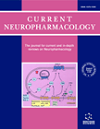
Full text loading...
We use cookies to track usage and preferences.I Understand
This study investigates the connection between gut microbiota and poisoning caused by narcotics and psychodysleptics, using Mendelian randomization (MR) to explore possible causal relationships.
The study employed the MR analysis, leveraging genetic variants as instrumental variables to facilitate robust causal inference. Data for gut microbiota was extracted from the MiBioGen study, integrating genome-wide genotyping data with 16S fecal microbiota profiles. Outcome metrics were based on the Finngen study. Genetic instruments were meticulously extracted based on stringent criteria, and harmonized with SNP outcomes associated with “Poisoning by narcotics and psychodysleptics (hallucinogens)”. The inverse-variance weighted (IVW) method was utilized for MR analysis, supplemented by sensitivity analyses including MR-Egger Regression, Weighted Median Approach, and Leave-One-Out Cross-Validation.
Among various microbial groups, nine showed significant statistical links. Specifically, Class Negativicutes (OR 5.68, 95% CI 2.13-15.16, p = 0.0005) and Order Selenomonadales (OR 5.68, 95% CI 2.13-15.16, p = 0.0005) were notably associated. These findings were consistent across different sensitivity analyses.
The relationship between gut microbiota and the adverse effects of narcotics and psychodysleptics is an emerging area of research. Our MR study identifies certain microbes that might influence the body's response to these substances. These insights could help in predicting and treating the effects of narcotics and psychodysleptics in the future.

Article metrics loading...

Full text loading...
References


Data & Media loading...
Supplements

